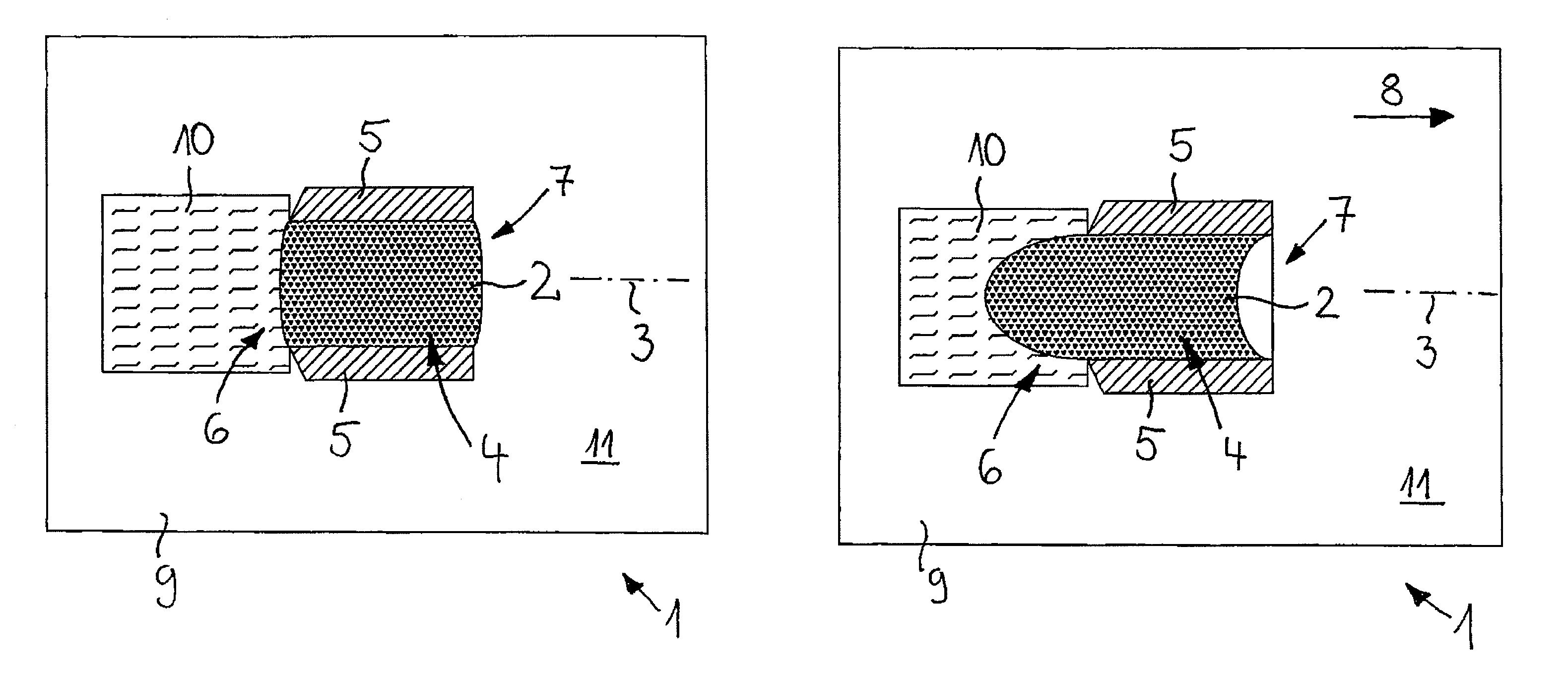Acceleration sensor and/or tilt sensor
a technology of sensor, which is applied in the direction of acceleration measurement using interia forces, instruments, surveying and navigation, etc., can solve the problems of only slight change, acceleration and/or tilt sensor permits only a limited sensitivity, and the hollow interior of the housing is distributed, etc., to achieve the effect of adequate surface tension, improved sensitivity, and suitable adhesion
- Summary
- Abstract
- Description
- Claims
- Application Information
AI Technical Summary
Benefits of technology
Problems solved by technology
Method used
Image
Examples
Embodiment Construction
[0037]An acceleration sensor labeled overall as 1 has a ferromagnetic fluid 2, which is magnetized along a magnetization axis 3. The magnetization can be accomplished through permanently magnetized particles made of iron, nickel, or cobalt contained in the fluid that have been aligned along a magnetization axis 3 with the aid of a strong magnetic field.
[0038]The fluid 2 is arranged in a receptacle in such a way that it can be displaced relative to the receptacle by an acceleration acting on the acceleration sensor 1. In order to detect a displacement of the fluid 2, a magnetic field detector arrangement is integrated in the receptacle.
[0039]In the exemplary embodiment shown in FIGS. 1 through 3, the receptacle has a channel 4 whose longitudinal axis is located in the magnetization axis or runs parallel thereto. The channel 4 is surrounded by a wall 5, which is approximately cylindrical on its inner surface facing the acceleration 2. The inner surface of the wall 5 facing the channel...
PUM
 Login to View More
Login to View More Abstract
Description
Claims
Application Information
 Login to View More
Login to View More - R&D
- Intellectual Property
- Life Sciences
- Materials
- Tech Scout
- Unparalleled Data Quality
- Higher Quality Content
- 60% Fewer Hallucinations
Browse by: Latest US Patents, China's latest patents, Technical Efficacy Thesaurus, Application Domain, Technology Topic, Popular Technical Reports.
© 2025 PatSnap. All rights reserved.Legal|Privacy policy|Modern Slavery Act Transparency Statement|Sitemap|About US| Contact US: help@patsnap.com



